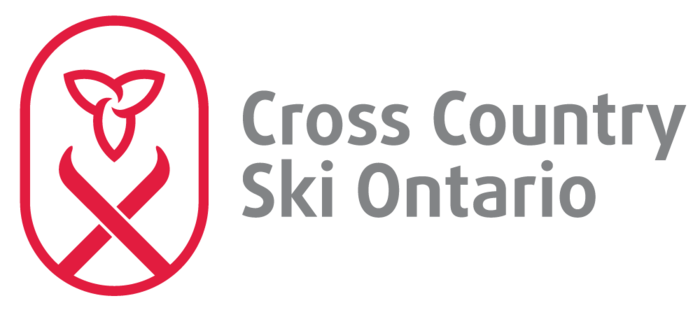Jackrabbit Technique Award #4 Sticker
$0.50
One-step Double Poling: The skier should be able to demonstrate this technique as described in Level 3, and show a consistent fluid action with good balance at both the pole plant and the end of the pole push phase.
Free Skate: Follow the steps outlined in Level 3. There should be an obvious and complete weight transfer from ski to ski (the skier glides on one ski and then the other).
One Skate: The One Skate technique requires a poling action (arm push) with each leg push. The skier begins as if Double Poling. The weight is placed mainly on the right ski, while the left ski is lifted and angled a bit to the side. Ski tips should be kept 50 cm apart. The right hip and shoulder are over the gliding ski until the leg push is initiated. The skier plants the poles with the tips slightly ahead of the binding. The skier pushes down with the upper body and arms, beginning to transfer the weight onto the left ski. Knees and ankles bend before pushing off. The leg pushes to the side, not back, and as the ski is pushed off it remains parallel to the snow. The weight transfer is accomplished by edging and pushing off the right ski, and pushing with the arms. The completion of the poling extension is synchronized with completing the weight transfer to the left ski. As the skier shifts onto the new ski, the arms are recovered along with the right ski and the sequence is repeated using the opposite arms and legs. The glide on the left and right skis is consistent. During each glide, the feet come close to each other.
Two Skate: The Two Skate technique is similar to the One Skate except the poling action only occurs with every second leg push. The skier begins as if Double Poling, gliding with the weight on the right ski and the right shoulder and hip aligned over it. The left ski is lifted and angled a bit to the side. Ski tips should be approximately 50 cm apart. The skier plants the poles with the tips slightly ahead of the binding, and completes a Double Poling push action. As the skier pushes down with the upper body and arms, he/she begins to transfer the weight onto the left ski by pushing off with the right leg. The skier glides on the left ski, with left hip and shoulder aligned on the glide (left) ski, and begins to recover the arms forward. The skier then skates off the new glide ski (left) using only a leg push. The arms are recovered forward over the right ski in preparation for another Double Poling action after the skier has transferred the weight back to the right ski.
Step Turn: The skier starts in a “high” tuck position and glides down the hill. The skier completes several Step Turns in one direction, using small, quick steps, and consistently maintaining the tuck position. Weight is kept on the heels. During this exercise there is a complete weight transfer from one ski to the other. Skis are edged when weight shifting. The skier should be able to Step Turn both to the left and right.
Parallel Side Slipping: The skier maintains the Ready Position throughout. By moving the knees and rolling the ankles in and out, the skier shifts weight alternately on the uphill and downhill edges. Skis remain parallel while slipping down the hill sideways. The skier demonstrates control by stopping mid-slope. The skier should be able to sideslip at least one metre down the hill, and demonstrate this skill facing both directions.
Offset: This technique requires a poling action after every second leg push. The skier begins as if going to use the Two Skate technique, but the ski tips are generally a bit wider. The skier balances on the left ski and pushes with the left leg in order to step up the hill onto the right ski, planting both poles at approximately the same time (three point landing). The right shoulder and hip should be aligned over the right ski. The poles are planted in an “offset” position. The right pole is planted with a slight slant to the rear, with the tip beside the right binding. The left pole is angled more sharply back and to the side, with the tip at the left binding. The skier continues with an action similar to the Double Poling motion but with less bend at the waist. During the Double Poling action, the skating (pushing and weighted) right ski is edged and the skier pushes off with the right leg and arms to begin the weight transfer to the left ski. The skier balances briefly with the left hip and shoulder aligned over the left ski. The ski is then edged and the skier pushes off the left leg and steps and shifts the weight onto the right ski, to start the cycle again. The skier’s weight shifts quickly and does not linger over the ski as it does with One Skate and Two Skate techniques. The skier must be able to offset on both sides – i.e. with right hand leading and with left hand leading.




